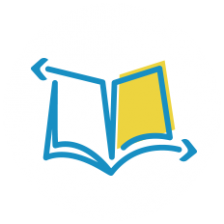Closing the gap has become a hot topic for most educators, especially among special educators. But “closing the gap” suggests to the public education system that the sole intent and purpose is to address the deficiencies between the performance levels of those in a specific sub group. These subgroups of students relate to a variety of factors, including gender and economic standing, among others. In this post, I will address this topic from the point of view of those serving in the field of special education.
Discussing this issue with your peers will yield a wide variety of responses ranging from calm and collected to visibly perturbed and worried. This range of emotions is largely dictated by that individual’s current place within the education system (e.g., teachers, administrators, etc.). However, we all share the same vision of wanting to see our children succeed. The big question, both in general and in special education, is how do we accomplish this? How do we push our students forward, lead them to academic success and, at the same time, prove that growth? Moreover, this standard of growth is dictated by additional research and numerical-based algorithms that suggest a certain standard of growth based upon the student’s current level.
The next challenge is finding a way to address the educational gap between kids who are already struggling and their peers. What is a realistic expectation for our students in the classroom? A common roadblock that Intervention Specialists encounter is the role of expectations within the classroom; namely, that they significantly fall short for our students. Just because a student requires accommodations does not imply that he or she cannot complete the task at hand. The role of special education is to provide a stepping stool for our students so that they can better reach their goals. The idea is that, as our students improve and grow stronger, they will need this stepping stool less and less. Or rather, the role of the stepping stool changes over time. For example, I am a pretty short lady, so I will always need my stepping stool no matter how far in life I go, but what that stool represents and how I use it in my daily life has evolved and will continue to do so.
Our expectations for our students in special education should be challenging but obtainable – just as they would be for students within the general education classroom. To compromise the standards or expectations for our students is a disservice to them. Challenging all students and pushing them to redefine their abilities within reason can be a difficult task for any educator no matter how experienced. At the same time, we must keep in mind the importance of meeting our students where they currently are and not setting the bar below their skill levels. When students know they’re struggling, there’s nothing worse than insulting them with a low bar of accomplishment. Children in the classroom are all at different places in terms of their skills and knowledge. By placing expectations that are more closely related to students’ actual skill levels, we encourage them to rise to the challenge and see the value in overcoming it.
The role of the individualized education program (IEP) is to provide a foundation to help children reach educational goals by bringing students, teachers and service providers together – not a rubber stamp of lowering expectations. Kids receiving special education services are knowledgeable, resourceful and, after all, still children. The expectations placed on special education students don’t necessarily have to be outlined in a five-point rubric but can play out in their interaction in the classroom, participating with their peers and discussing classroom topics.
Maybe Dr. Seuss had it right all along…
“So be sure when you step, step with care and great tact. And remember that life’s a great balancing act. And will you succeed? Yes! You will, indeed! (98 and ¾ percent guaranteed) Kid, you’ll move mountains.”
These mountains can be moved in a variety of ways. It does not mean that the expectations and the standards set before them need to be lower. Different, yes; achievable, yes; lower, definitely not.
Think back through your own educational career. At some point, a teacher reached out and met you at your level to help you navigate a challenge. They provided the path for you to move mountains – and here you are now. You have achieved success, and now you have the opportunity to pass that experience onto others.
Now, let’s be clear. The path you blaze for your students can come in a variety of shapes and contours, which benefits the many different students in your class. The visuals, the prompts, the little reminders, the extra examples, the application of technology – all will factor into an individual student’s ability to rise above any challenge. Keep in mind that not all challenges are academic, but the tools and resources that these students utilize will help them in a variety of settings and scenarios.
Therefore, I challenge you to reframe the conversation surrounding students and the role their accommodations play within their educational experience.







Leave a Reply
Your email address will not be published.